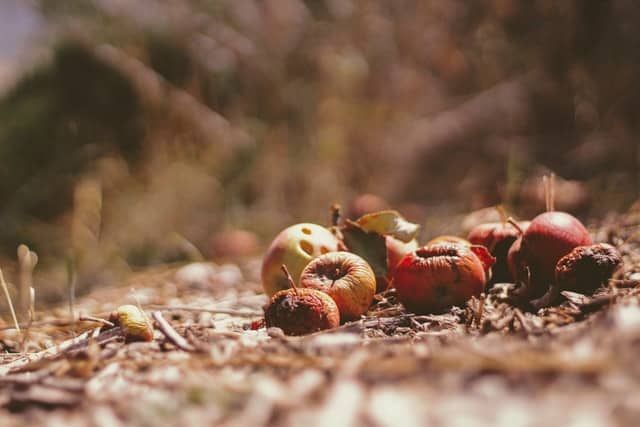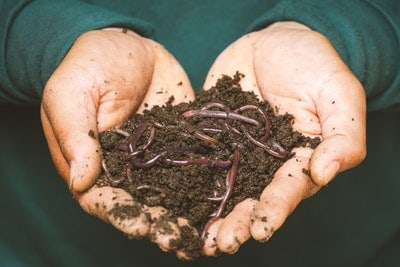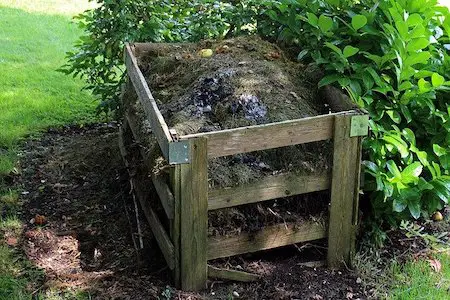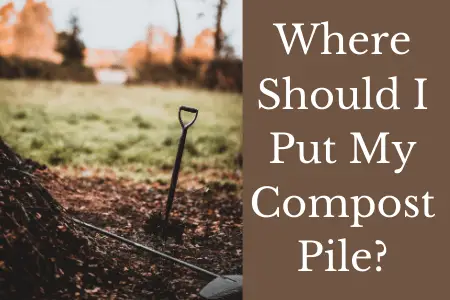Aside from the tendency of leaves to mat another major problem encountered in leaf composting is the time leaves take to breakdown. Matted leaves do not allow sufficient air and water needed for decomposition to penetrate the compost pile. This slows down the breakdown process a great deal. That’s why we are advised to shred the leaves before composting.
The disadvantage time taken for leaves to decompose poses shouldn’t dissuade anyone from keeping leaf piles. The advantages of leaf composting in gardening are far-reaching. There are available techniques that can be employed to speed up decomposition.
There is a complex non-carbohydrate aromatic polymer called lignin, found in the cell wall of plants. Leaves contain varying amounts of lignin. The amount of lignin a leaf possesses is proportional to the time it takes to breakdown – the higher the amount of lignin a leaf possesses, the longer the time it’d take to decompose.
Also, the higher the amount of cellulose in the cell wall of leaves, the longer it’ll take to decompose. Cellulose and lignin, found in the cell wall, are resistant to decomposition.
Other Factors that determine Leaf Decomposition
There is also another factor in determining the length of time the decomposition process of a leaf will take: the nitrogen and calcium content of the leaf. Leaves with a high level of nitrogen and calcium will decompose faster than leaves with low levels of these two macronutrients.
Therefore, leaves that decompose easily are leaves having high nitrogen and calcium content but low amounts of lignin.
They include: Fruit leaves like lime and maple leaves, poplar leaves, ash leaves, willow, etc. On the other hand, leaves with low nitrogen and calcium content, and high lignin content don’t do well in composting. They take a longer time to compost, examples of these include Oak leaves, Beech leaves, Chestnut leaves, etc.
Other factors that determine the length of the decomposition process:
Decomposers (fungi, bacteria, invertebrates such as worms and insects, etc): The function of the decomposers in our food web is to accelerate the breakdown of organic materials. They act on the leaf pile and reduce them to bits. This shredding of leaves by decomposers facilitates the action of soil bacteria and fungi.
Location: The area you select to place your leaf pile should be leveled with dirt. Areas susceptible to flooding, runoff, and erosion should be avoided. If the leaf pile is soaked with water, it would disrupt the decomposition of leaves.
Temperature: The higher the temperature in the leaf pile, the higher the rate of decomposition. The temperature in the pile can be increased by mixing. Temperatures below 42 – 71 degrees Celsius do not encourage decomposition. The pile should be mixed to keep the temperature in the pile at about 42 – 71 degrees Celsius.
Low temperatures slow down the rate of that your leaves will decompose.

Dry temperatures have the same effect on leaf piles. During dry temperatures, the leaf pile should be covered to prevent loss of moisture. Generally, extreme temperature disrupts the decomposition process.
Nature and constituent of soil: The nature of the soil in the area your leaf pile is situated would affect the decomposition process. Loamy soil is richer than clayey and sandy soil in nutrients, moisture, and humus. It promotes the decomposition process more than clayey and sandy soils. Soils rich in the earthworm, bacteria, and soil microbes aid leaf composting unlike those with reduced soil organisms.
Climate: Leaf piles decompose faster in ha humid and hot climates like the tropics. Decomposition is slower in climates with low temperatures like the poles.
The decomposition of leaves is a gradual process that takes time. Leaf piles that are tended to and adequately maintained decompose faster than those left untended. Generally leaves take about 6 – 12 months to breakdown naturally into compost. Leaves don’t have enough nitrogen in themselves to breakdown faster. However, there are ways to speed up the decomposition process and help them breakdown faster.
They include:
Introducing organisms with high nitrogen content: Nitrogen speeds up the rate of decomposition. Already clipped grass can be added to the pile. Also, food waste and soil from a garden, if available, are rich in nitrogen and can be added to the leaf pile to speed up decomposition. However, if none of these is available, fertiliser can be measured and mixed into the leaf pile to achieve similar results.
This helps to increase the activities of microorganisms (most of which need nitrogen for their metabolic activities and growth) and bacteria in the pile. This ultimately increases the decomposition rate.

Shredding of leaves: Shredding of leaves helps reduce the possibility of matting. To shred, the leaves can be run over by a lawnmower or passed through a compost mill or leaf shredder. This helps to increase the surface area of leaves and provides an increased area for microorganisms to act on.
Mixing the leaves: Every 12 days the compost pile of leaves can be turned through. This helps introduce oxygen, which is very important for decomposition, into the pile. The oxygen would help increase microbial activity in the pile.
Adding old compost to the new pile: The addition of old compost helps introduce microorganisms into the new pile. This kicks off decomposition in the new pile.
Adequate moisture: The leaf pile should not be left dry. It should be kept moist constantly to ensure that the decomposition process does not slow down. A sprinkler or hose can be used to add moisture to the leaf pile.
Arrange your pile in layers: Your leaf pile should be arranged alternate with compost or fertiliser. This would increase microbial action and induce the breakdown of leaves in the pile.
There are many ways to increase the decomposition process of leaves. Nitrogen plays a major role in the decomposition of leaves and therefore is an essential ingredient for leaf composting. The method used in leaf composting determines how much time the decomposition of the leaf pile will take. Leaves suitable for leaf composting should be used. The use of unsuitable leaves would prolong the decomposition process.






